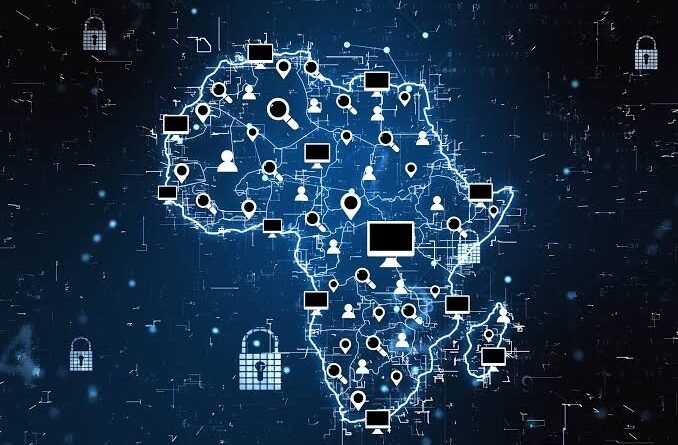Accelerating Growth and Development in Africa: The Role of Technology and Innovation
By Onipede Paul Oyekunle
Africa, a cradle of civilization whose strength was weakened by the colonialists and the successors of its founding fathers has in no measures suffered setbacks amidst it’s immense potential and opportunities. A continent with a population of over 1.3 billion people and a combined GDP of $2.6 trillion has little or no recognition in the global landscape. The continent is faced with insurmountable challenges, such as poverty, inequality, conflict, climate change, and health crises amongst others. These prolonged challenges are largely due to the failure of the African political leaders who have seen the resources of the continent and its people as their “inheritance”. Sadly, the divided interest of the leaders of the continent which is obvious in the global arena has become a weak point that the enemies of the continent continue to take advantage of.
While it is believed that the challenges are insurmountable and for the continent to achieve sustainable and inclusive growth, it needs to harness the power of technology and innovation, which are key drivers of economic and social transformation amongst others.
Technology and Innovation for Economic Growth
Like other continent of the world, Africa can further leverage technology and innovation to contribute to economic growth by increasing productivity, enhancing competitiveness, diversifying the economy, and creating jobs. According to the World Economic Forum, Africa is expected to grow at the second-fastest rate among major regions globally in 2024, with an average GDP growth of 3.5%. This growth will be driven by the services sector, which accounts for more than half of the continent’s GDP, and by the resource-intensive countries, which benefit from the high demand and prices for Africa’s commodities.
However, to sustain this growth and achieve structural transformation, Africa needs to invest more in Research and Development (R&D) and innovation, which are currently low compared to other regions. The underperformance of Africa in research and development is birthed by the less priority give to the education industry. For example, in Nigeria, the education industry from the basic to tertiary has suffered significant setback due to poor funding leading to incessant down tolling. The resultant effect of the past failure of the country’s leadership in the past is the current reality and it may become worse in the years ahead because of the demanding challenges the nation is currently facing, most especially insecurity which has significantly contributed to the over 20 million out of school children. The same challenge the nation is facing is peculiar to most of the countries making up the continent.
According to the UNESCO Institute for Statistics, Africa’s gross expenditure on R&D (GERD) as a percentage of GDP was only 0.5% in 2020, while the world average was 2.2%. Moreover, Africa’s share of global patents, scientific publications, and high-tech exports was less than 1% in the same year.
To bridge this gap, Africa needs to develop and implement coherent and comprehensive Science, Technology, and Innovation (STI) policies that aligns with its development goals and priorities. The African Union has adopted the STI Strategy for Africa 2024 (STISA-2024), which is the first of the ten-year incremental phasing strategies to respond to the demand for STI to impact across critical sectors such as agriculture, energy, environment, health, infrastructure, mining, security, and water. The strategy is based on six priority areas and four pillars. The priority areas are: eradication of hunger and achieving food security; prevention and control of diseases; communication (physical and intellectual mobility); protection of our space; live together-build the society and wealth creation. The pillars are: building and/or upgrading research infrastructures; enhancing professional and technical competencies, promoting entrepreneurship and innovation and providing an enabling environment for STI development.
The smooth implementation of STISA-2024 requires the involvement and coordination of various stakeholders, such as governments, Regional Economic Communities (RECs), research institutions, universities, private sector, civil society, and development partners. It also requires adequate funding, monitoring, and evaluation mechanisms to ensure its effectiveness and impact.
Technology and Innovation for Social Inclusion and Human Development
The role of Technology and innovation to social inclusion cannot be overemphasised. It can contribute to social inclusion and human development in Africa by improving access to quality education, health care, information, and communication. Technology can enable the delivery of digital and distance learning, telemedicine, e-government, and e-commerce, which can reduce the barriers of time, distance, and cost, and increase the opportunities for learning, health, participation, and income generation. Innovation can also provide solutions to various social problems, such as water scarcity, sanitation, farm productivity, waste management, and renewable energy, which can enhance the quality of life and well-being of the people.
However, to realize these benefits, Africa needs to address the challenges of digital divide, cybercrime, and environmental degradation, which are some of the unintended consequences of technology and innovation. According to the International Telecommunication Union, Africa’s internet penetration rate was only 28.2% in 2020, while the world average was 53.6%. Moreover, Africa’s cybersecurity readiness was the lowest among all regions, with only 14% of countries having a national cybersecurity strategy⁷. Furthermore, Africa’s carbon emissions increased by 3.4% in 2020, while its share of renewable energy sources decreased by 2.1%.
To address these challenges, Africa needs to adopt a holistic and human-centered approach to technology and innovation, which considers the ethical, legal, social, and environmental implications of their development and use. Africa also needs to strengthen its digital and innovation capacities, by investing in infrastructure, skills, data, and governance, and by fostering a culture of innovation and collaboration among its stakeholders. Similarly, needs to leverage its rich and diverse cultural and natural heritage, which can inspire creativity and innovation, and promote its identity and values.
Artificial Intelligence for Africa’s Future
One of the most promising and disruptive technologies that can shape Africa’s future is the Artificial Intelligence (AI), which is the ability of machines to perform tasks that normally require human intelligence, such as reasoning, learning, decision making, and problem solving. AI though with its limitations has the potential to transform various sectors and domains in Africa, such as agriculture, health, education, finance, security, and governance, by enhancing efficiency, accuracy, and productivity, and by providing new insights, opportunities, and solutions.
For example, AI can help improve agricultural productivity and food security in Africa, by enabling precision farming, crop monitoring, pest and disease detection and control, and weather forecasting. It can also help improve health outcomes and access to health care by enabling diagnosis, treatment, prevention, and research of diseases, and by providing telemedicine and health information systems. Additionally, it can also help improve education quality and access in Africa, by enabling personalized and adaptive learning, assessment, and feedback, and by providing digital and online learning platforms and resources.
To harness the potential of AI for Africa, the continent needs to overcome the challenges and risks associated with its development and deployment, such as data availability and quality, human and institutional capacity, ethical and social implications, and regulatory and governance frameworks. Africa also needs to ensure that AI is inclusive, equitable, and beneficial for all its people, and that it respects and promotes human rights, dignity, and values.
To achieve this, Africa needs to develop and implement a strategic vision and roadmap for AI in Africa, which aligns with its development goals and priorities, and which builds on its existing initiatives and frameworks, such as the STISA-2024, the African Continental Free Trade Area (AfCFTA), and the African Union Convention on Cybersecurity and Personal Data Protection. Africa also needs to foster a vibrant and collaborative AI ecosystem, which involves various stakeholders, such as governments, RECs, research institutions, universities, private sector, civil society, and development partners, and which leverages the opportunities and resources offered by regional and global platforms, such as the UNESCO Forum on AI in Africa, the Partnership on AI, and the Global Partnership on AI.
Conclusion
Technology and innovation are essential for the progress and prosperity of Africa, as they offer solutions to the continent’s challenges and opportunities for its development. However, technology and innovation are not ends in themselves, but means to achieve the continent’s vision and aspirations, as articulated in the Agenda 2063: The Africa We Want. Therefore, Africa needs to adopt a strategic and holistic approach to technology and innovation, which considers the needs, interests, and values of its people, and which ensures that technology and innovation are inclusive, equitable, and beneficial for all.
Onipede Paul Oyekunle is an Independent Researcher and Writer. He can be reached via onipedepaulekiti@yahoo.com




